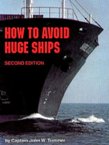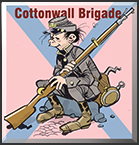wdolson
Posts: 10398
Joined: 6/28/2006
From: Near Portland, OR
Status: offline

|
quote:
ORIGINAL: Terminus
Patton was right about the Sherman, given what the Army knew at the time.
When the time came to go into Italy, France and Germany, the circumstances changed. By that time, and to the sorrow of the men who had to take the Sherman into combat, the senior leadership had too much "face" invested in it to admit that the Sherman was inadequate in stand-up combat against German tanks.
Let's not forget, BTW (which the film conveniently glosses over), that fighting tanks in the US Army doctrine was the job of tank destroyers. The Sherman was made for infantry support.
When the decisions were made to settle on the Sherman, nobody in the west could really foresee how radically armor was going to change by the time the US was facing the Germans in force. The evolution of armor driven by the arms race on the Eastern Front is one of the fastest evolving arms type of the war. Only one tank type that fought in the European war stayed in production throughout the war, the Panzer IV and it went through a dramatic evolution. They only stayed in production because more advanced models had teething problems as well as production problems and the Panzer IV could take a lot of updating without becoming overloaded. It was sort of overbuilt and under gunned for its size for the battles of 1940.
When the Sherman entered combat with the 8th Army, it swept the battlefield of mostly Panzer IIIs. The only gun the Afrika Korps had that could easily knock it out at range was the stationary 88mm AA gun. As far as early combat reports went, it sounded like the Sherman was a war winner.
The western Allies weren't fully aware of what was happening on the Eastern Front. There were some information coming from the Russians and some film footage, but nobody really believed the Russians were telling the truth. The western Allies certainly knew about the T-34, but I don't believe anybody got their hands on one until some German captured T-34s were captured by the Western Allies.
The late 1941 into 1942 Afrika Korps was getting the obsolete cast offs no longer useful on the Eastern Front while most of upgunned tanks were sent East. I believe the Germans were working on the Tiger and Panther before the war began, but those projects got high priority when the Germans started encountering T-34s and KV-1s. Tank destroyers got massively upgunned in a short period too. The first German tank destroyer was based on the Panzer I chassis and had a 47mm gun. By 1943 they were fielding tank destroyers with 88mm and they had some with 128mm by the end of the war (though none ever went into full production).
No other area of arms went through quite such a revolution during the war. The War in the Atlantic might be the only other area that went through a rapid evolution of technologies, but even there most often the older weapons platforms were just updated with new weaponry, they weren't retired and replaced by whole new weapons platforms. PBYs were used throughout the War of the Atlantic, they just got better electronics and better offensive weapons. Same plane, new equipment.
Hindsight is always 20/20. I think any reasonable western leader probably thought armor was going to go through a somewhat slower evolution during the war and the Sherman should be perfectly adequate for most of the roles it was called upon to do.
As others have pointed out, the US tank and tank destroyer doctrine were flawed when it came to the real war. But then again, the only powers that had any recent experience in armored warfare at the start of the war were Germany from their experiences in Spain, and Japan and the USSR from their battles on the Mongolian border. Japan and the USSR took away very different lessons from their experience. Japan learned they could never match a large foreign power in armor quantities, so don't even try. The Russians learned some lessons in mobile warfare they incorporated into their tactics.
The Germans had learned their lessons they best and had the best doctrine in mobile warfare at the start of the war. That gave them a big leg up in the early fighting. The US should have studied the lessons of the Battle of France and improved on their doctrine adopting more of the German's ideas, but they didn't.
A big what if would be what if the US did decide to adopt German armored doctrine after the Battle of France. How would that have affected armor designs. US tank destroyers probably would have gotten a major redesign to look more like StuGs. I don't know how that would have affected the Sherman though. It might have resulted in the 76mm high velocity gunned Sherman becoming standard rather than the 75mm low velocity gun. US tanks were built with a very high profile for tanks of the day which was largely due to the suspension adopted. That made them vulnerable on the battlefield. I'm not sure if that would have been addressed in this scenario.
The same thing happened with fighter tactics. The Germans were the first to incorporate the finger 4 formation and the 2 plane element as the 2 smallest fighting organizations. The finger 4 gave fighter pilots mutual cover of each other's backs and was spread out enough so the wing men weren't spending all their time trying to avoid colliding with the section leader.
It took a while for both the US and the British to learn and adopt this formation tactic as doctrine. Both western powers thought fighters should be concentrated as close together for hitting power, but it really didn't work very well in practice. Douglas Bader in the RAF saw the strength of the German formation early on and tried to get permission to use it, but was denied by highers up who thought they knew better.
Bill
_____________________________
WitP AE - Test team lead, programmer  |
 Printable Version
Printable Version












 New Messages
New Messages No New Messages
No New Messages Hot Topic w/ New Messages
Hot Topic w/ New Messages Hot Topic w/o New Messages
Hot Topic w/o New Messages Locked w/ New Messages
Locked w/ New Messages Locked w/o New Messages
Locked w/o New Messages Post New Thread
Post New Thread